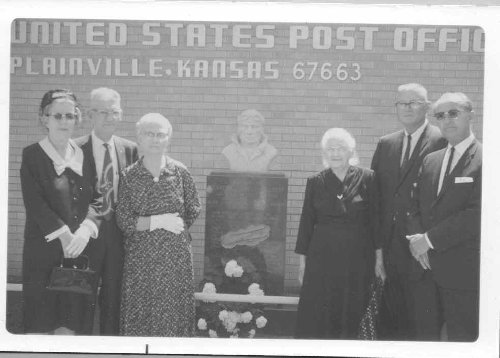|
Clarence A. Gilbert
First tragedy of night/day transcontinental airmail
Clarence A. Gilbert join ed
the U.S. Air Mail Service committed to a vision of air travel's
glorious future. In a note penned to his family he wrote
that airplanes "backed the automobile off the map." With
characteristic enthusiasm, he entered de Havilland training,
ready, as he said "to give her the gun." ed
the U.S. Air Mail Service committed to a vision of air travel's
glorious future. In a note penned to his family he wrote
that airplanes "backed the automobile off the map." With
characteristic enthusiasm, he entered de Havilland training,
ready, as he said "to give her the gun."
Gilbert gave the WWI
English-built bomber de Havilland "the gun" first as a U.S.
Army flying cadet and later as a flying sergeant at Ft. Crook,
Omaha. An accomplished pilot, the Army 2nd lieutenant
was easily accepted into the Air Mail Service on August 15,
1924. After briefly serving as a mechanic and relief pilot
at Iowa City, he received a regular appointment, flying the
mail from Chicago to Iowa City.
Came the night of December 21, 1924;
Christmas mails were accumulating and additional flights
deemed essential. Gilbert was pressed into service.
Many years later Congressman Bob Dole,
principal speaker at a dedication ceremony to Gilbert in his
home town, Plainville, Kansas, described the day of the tragedy.
"December 21, 1924, was a drab winter day with a low, gray overcast,"
he began.
 "The horizon was only dimly outlined, and visibility was cut
to a few miles by a blue haze. This last-minute Christmas
rush was on, both in the store and in the air mal; and extra
sections were called in to help transport the surplus packages.
Clarence Gilbert was one of two pilots chosen to fly the mail
west that day.
"The horizon was only dimly outlined, and visibility was cut
to a few miles by a blue haze. This last-minute Christmas
rush was on, both in the store and in the air mal; and extra
sections were called in to help transport the surplus packages.
Clarence Gilbert was one of two pilots chosen to fly the mail
west that day.
"He took off from Chicago
on scheduled time [7:00 p.m.]; and as he flew west, he encountered
a blinding snow storm which obscured the very essential flares
of the lighted airways below. It is assumed that Clarence
Gilbert, unable to rely on his sense of direction, balance,
or altitude, finally decided to relinquish the plane to the
unyielding elements, and if possible, save his own life.
He paused long enough to cut the ignition, thus preventing fire
and saving the mail.
"He then stepped over the
side, but his parachute had opened too close to the plane and
the tail surfaces cut the lines, rendering his parachute useless.
His resulting death was the first fatality since night flying
had begun in July of that year.
"Much credit should go to
those intrepid aviators who from May 1918, onward fought the
battle of flying the mails. These pilots were true adventurers.
They returned to the jobs day after day, coolly weighing their
chances. In a time when most men plodded from home to
office and office to home, this small group was set apart by
an occupation wherein each departure bore the chance they may
not return.
"Clarence Gilbert was in
every sense of the word a 'pioneer' and a 'hero.' It is
both fitting and proper that we pause to dedicate this memorial
to him today."
Photo Gallery


Left: Clarence Gilbert on
left. Right: Clarence and Blanche Gilbert in 1923


Clarence Gilbert in de Havilland

Back Row Left to Right: James
Gilbert and Harlan Gilbert (brothers). Front Row: Blanch
Murphy (widow), Ethel Shepherd (sister), Rose Gilbert (mother),
Ed Murphy.
All photos courtesy of Anita
Wilson
Killed in snowstorm
|

 ed
the U.S. Air Mail Service committed to a vision of air travel's
glorious future. In a note penned to his family he wrote
that airplanes "backed the automobile off the map." With
characteristic enthusiasm, he entered de Havilland training,
ready, as he said "to give her the gun."
ed
the U.S. Air Mail Service committed to a vision of air travel's
glorious future. In a note penned to his family he wrote
that airplanes "backed the automobile off the map." With
characteristic enthusiasm, he entered de Havilland training,
ready, as he said "to give her the gun." "The horizon was only dimly outlined, and visibility was cut
to a few miles by a blue haze. This last-minute Christmas
rush was on, both in the store and in the air mal; and extra
sections were called in to help transport the surplus packages.
Clarence Gilbert was one of two pilots chosen to fly the mail
west that day.
"The horizon was only dimly outlined, and visibility was cut
to a few miles by a blue haze. This last-minute Christmas
rush was on, both in the store and in the air mal; and extra
sections were called in to help transport the surplus packages.
Clarence Gilbert was one of two pilots chosen to fly the mail
west that day. 



